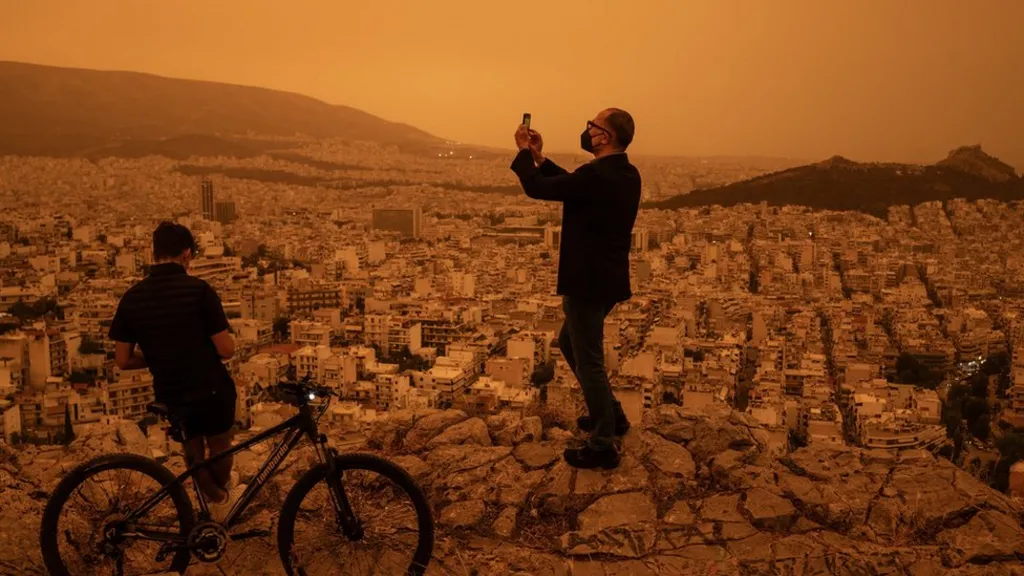[social_warfare]
Orange Dust Haze Over Athens: The Sahara’s Impact and What Lies Ahead
As Athenians woke up to an otherworldly scene, a striking orange haze enveloped the cityscape, an eerie reminder of nature’s untamed forces. This isn’t the first time the skies over Greece have turned shades of Martian orange, but the recent Sahara dust event is among the most severe since 2018.
This phenomenon, resulting from vast clouds of mineral dust carried from the Sahara Desert, casts a surreal glow and a thick blanket over Athens, extending as far north as Thessaloniki.

A Persistent and Expansive Issue. The Sahara Desert, an immense landscape of arid expanses, annually releases between 60 to 200 million tonnes of mineral dust into the atmosphere. While much of this dust settles back to the earth’s surface relatively quickly, finer particles are swept across continents by upper-level winds.
In this instance, the dust not only shrouded Greece but also affected regions as disparate as Switzerland and southern France in late March and early April. This wide-reaching impact highlights the interconnectedness of environmental phenomena, transcending geographical boundaries.

Atmospheric Conditions and Public Health
The mingling of dust with unusually high temperatures has created stifling conditions in southern Greece. Kostas Lagouvardos, a noted meteorologist, likened the view from a local weather station to the surface of Mars, emphasizing the dramatic alteration in the landscape and atmosphere. The compromised air quality poses significant health risks, particularly for those with respiratory ailments. Greek authorities have advised the public to wear protective masks, limit outdoor activities, and postpone physical exercise until the air clears—a temporary but vital adaptation to the hazardous conditions.
Complicating the environmental challenge are the wildfires that have flared up concurrently. In the past 24 hours alone, the Greek fire service has battled 25 wildfires. One particularly fierce blaze near a naval base on Crete necessitated the evacuation of homes and a kindergarten as temperatures on the island soared above 30°C (86°F). This confluence of dust, heat, and fire underscores the broader climatic vulnerabilities that Greece, like many parts of the world, faces amid changing global weather patterns.
Looking Ahead: Environmental Implications and Actions
The recurring dust episodes and their intensification call for a reevaluation of environmental and health preparedness strategies. Enhancing predictive meteorological models and public health advisories can play pivotal roles in mitigating the impacts of such dust storms. Moreover, understanding the broader implications of these dust clouds on climate change, soil deposition, and even marine ecosystems will be crucial.
As we contemplate the orange haze that temporarily transforms day into dusk, it serves as a vivid, visual reminder of our planet’s dynamic and interconnected environmental systems.
The need for increased research, international cooperation, and proactive measures has never been more apparent, ensuring that societies can better anticipate, respond to, and ultimately thrive amidst these challenges. The dust will settle, but the conversation and actions it precipitates must continue to evolve.

